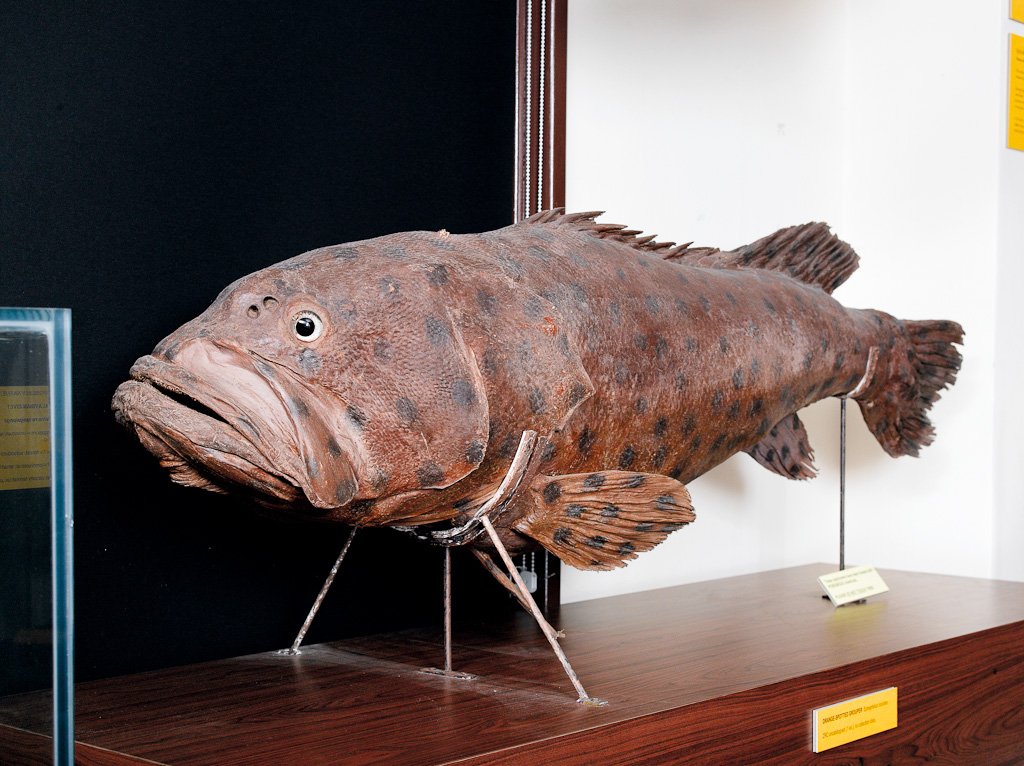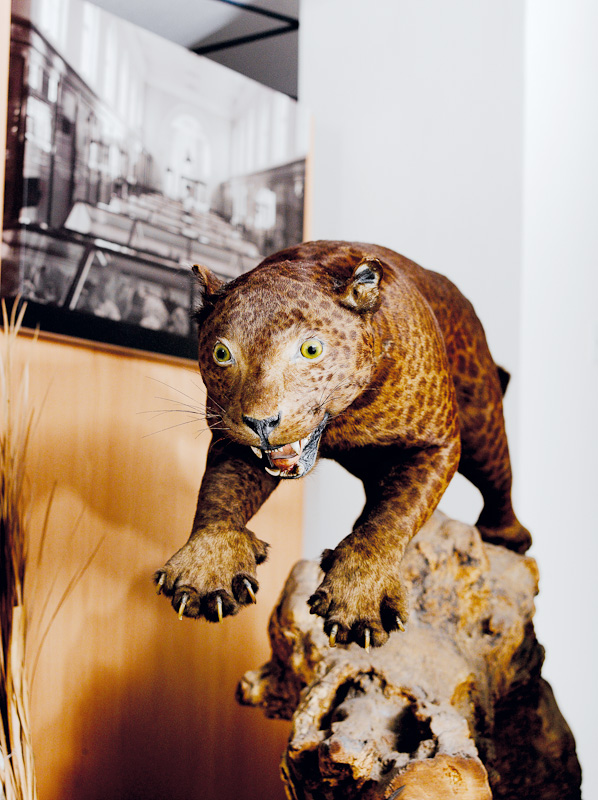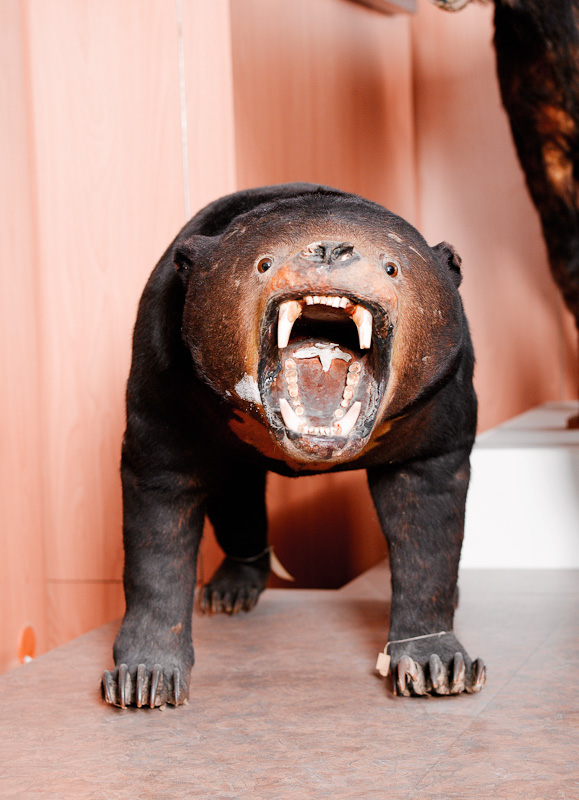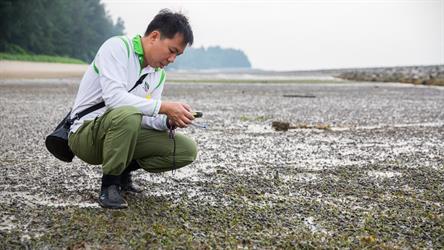What Dinosaurs and kiam chye-looking Reefs have in Common


When Challenge first met the Director of the Raffles Museum of Biodiversity and Research in August, his team was scrambling to raise money to buy a family of dinosaurs from the USA.
He was convinced they would be the perfect centrepiece for the new Lee Kong Chian Natural History Museum when it opens in 2014. (See “Coming Full Circle”)
After missing a July deadline, the Museum bought time and raised enough funds in September to buy three authentic skeletons of giant diplodocid sauropod (long-necked) dinosaurs.
Why the doggedness? Is he obsessed about dinosaurs? No, he replies flatly, it is a sound investment.
Prof Ng recalls a $1m dinosaur exhibit the Museum organised with the Science Centre some years ago. Tickets sold like hot cakes, and costs were recovered in six months, with profits to boot. “And the visitors knew they were just seeing replica bones,” he adds, with a grin. So when the Museum was offered a chance to buy genuine ones in April – at a price they felt reasonable – they grabbed it.
Coming Full Circle
The Raffles Museum was started in 1849. From 1970 to 1987, it was a semi-nomadic collection until it found a permanent home in NUS. The impetus to have a full-fledged museum came after 3000 visitors thronged the little-known gallery on Museum Open House Day 2009. News of how it failed to cope with the crowd led a donor to put down $10m towards the construction of a new facility. In 2010, another $36m was raised, with the museum to be renamed the Lee Kong Chian Natural History Museum when it opens, in NUS, in 2014.
Dinosaurs are a draw

Six years ago, Prof Ng began to look into museum planning intensively after the then National Heritage Board Chairman Tommy Koh suggested setting up a national natural history museum. He arrived at two conclusions after visiting the most successful ones in the US and Europe.
One: Museums with private endowments have a more sustainable business model as they can survive tough economic times – this is how future museums will be run.
Two: If “you have dinosaurs, you’re in business” as they are crowd-pullers. Prof Ng recounts how former President S R Nathan was awed when he held some genuine dinosaur fossils: “The President asked, ‘Is this real?’ That sense of wonderment can’t be hidden – not even in adults. The reaction was fantastic.”

Hard-sell
But while the natural history museum had unanimous support, some donors were not convinced that dinosaurs were relevant to Southeast Asian biodiversity.
They weren’t found here. They’re a waste of space and money. You don’t need to spend millions on gimmicky dinos, critics said.
But the Museum was undeterred, saying it had good scientific and educational reasons for wanting dinosaurs. It will set up a History of Life gallery to explain evolution, with the sauropods as key exhibits. A donor appeal letter read: “When dinosaurs walked the Earth over 100 million years ago, Singapore was part of a mega continent that had such giants… Dinosaurs will help (us) understand the biodiversity, climate change and extinction challenges now facing mankind and the planet.”
Prof Ng, a firm believer in public education and outreach, wants to have a supervised corner where children can handle real fossil fragments (not from the three dinosaurs but from nearby excavation sites in Wyoming, USA).
“Is there a risk they’ll destroy them? Yes. But is the risk worth it? Yes! We live in a very video- and IT-centric world, so touching something real helps kids to identify with the real thing and hopefully gets them excited enough to want to do science!”
With the dinosaurs funded by private money, the Government will give a matching grant. This endowment will provide scholarships to study Southeast Asian biodiversity, the raison d’être of the Museum currently located within the National University of Singapore.

Natural heritage in our cultural DNA
Over the years, the Raffles Museum evolved from being a “reference collection” for scientists, to having a public gallery with an education outreach arm. Its staff have studied and catalogued specimens from the region, including Singapore’s coastal areas such as Chek Jawa, and have contributed to the discovery of new species from all over Southeast Asia.
“(Our local reefs) are so kiam chye (ugly like salted vegetables) so why do we keep them? So I can boast about our biodiversity… Because no matter how sad our reefs are, they are ours,” says Prof Ng with indignation and pride, “especially since if we conserve and manage them well, the reefs can only get better over time.”
The biologist is adamant that nature heritage contributes to a nation’s identity but is frustrated that it has been overlooked. “People say it’s just science, but it’s... linked to our (collective) memory and culture.” The changi and tampines trees that estates have been named after are nearly extinct; flying foxes are long gone.
But even the feisty professor has learnt to “give and take” in the struggle to preserve natural heritage: “You can’t conserve all, but you can do your best.” But he expects Singapore, as a first world economy, to walk the sustainability talk better than before.

“Thirty years ago, you couldn’t stop the destruction of Chek Jawa. People would have laughed at you (for trying)” as bread-and-butter issues were critical then.
Happily, he observes, environmental education has increased vastly with schools improving their curricula, civil society becoming more active and young people taking keener interest. The secluded Raffles Museum, currently displaying a fraction of its 500,000 specimens, has become a popular school visit destination.
The Lee Kong Chian Museum is set to take biodiversity awareness to a new level. Visitors can step back in time to see Singapore’s lost flora and fauna.
“What was here during (Sir Stamford) Raffles’ time? The (new) museum will unlock that,” promises Prof Ng.

Narrow escape from the junkyard

First mooted by Sir Stamford Raffles – a keen naturalist – the museum opened in 1849 and by 1900, had become an international heritage and research centre for the region for natural history, culture and archaeology.
In 1965, the Singapore government took over the Raffles Museum, renaming it the National Museum. The administrators then preferred to focus on the arts and national development. Five years later, they decided to do away with the massive repository of animal specimens.
The iconic whale skeleton – which awed visitors when they entered the museum – was given to Malaysia. The rest would have been junked if not for a group of zoologists (including a young Leo Tan, now a well-known environmentalist and also Chairman of the Raffles Museum fundraising committee) in the then University of Singapore who adopted it. The collection, which was moved from place to place, finally found a permanent home at NUS in 1987 when it was renamed the Zoological Reference Collection.
It was reorganised to become the Raffles Museum of Biodiversity and Research in 1998. Its historical animal and plant collections have over 500,000 specimens, one of the largest collections of Southeast Asian fauna in the region.
- POSTED ON
Nov 8, 2011
- TEXT BY
Bridgette See
- PHOTOS BY
Lumina Studio









